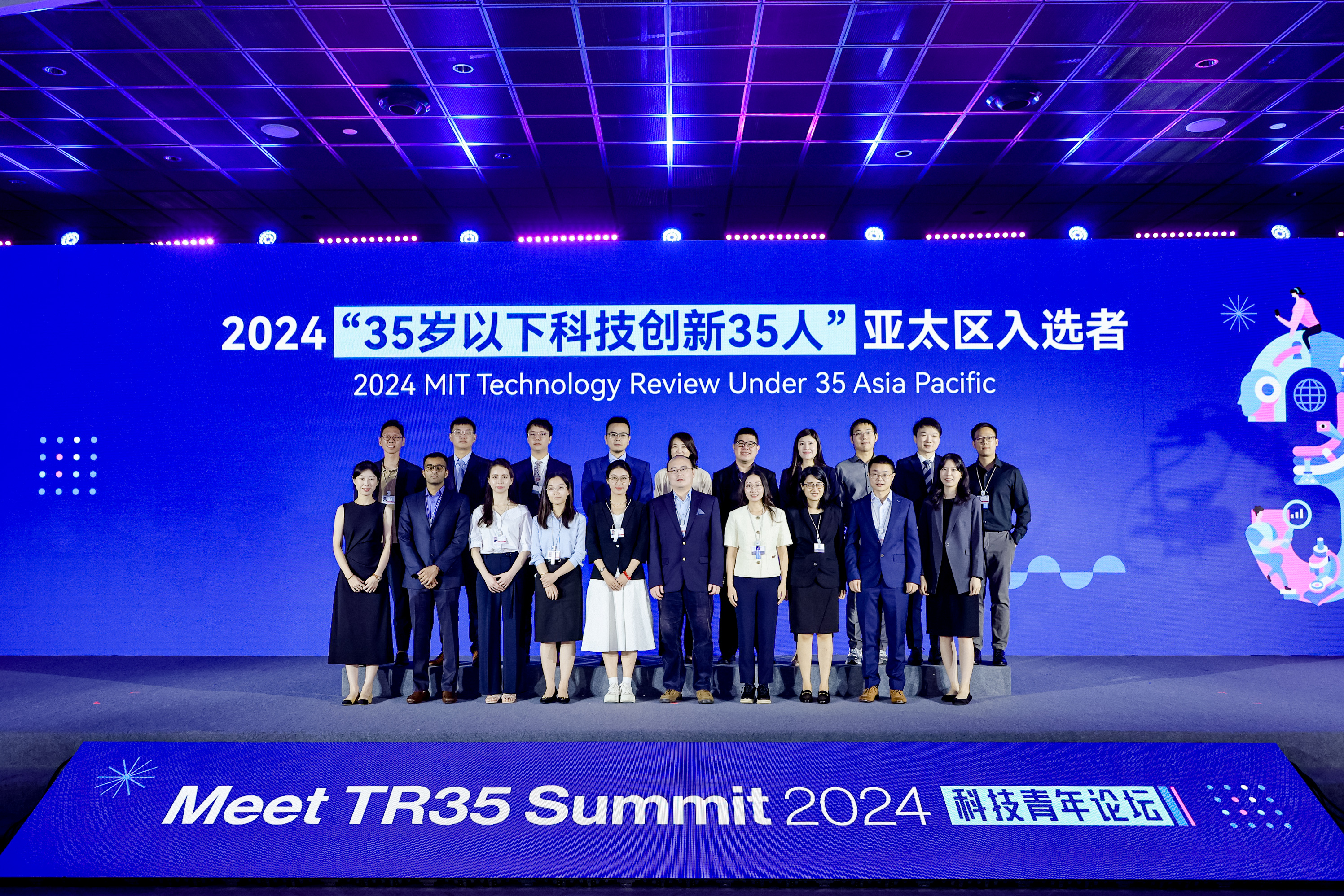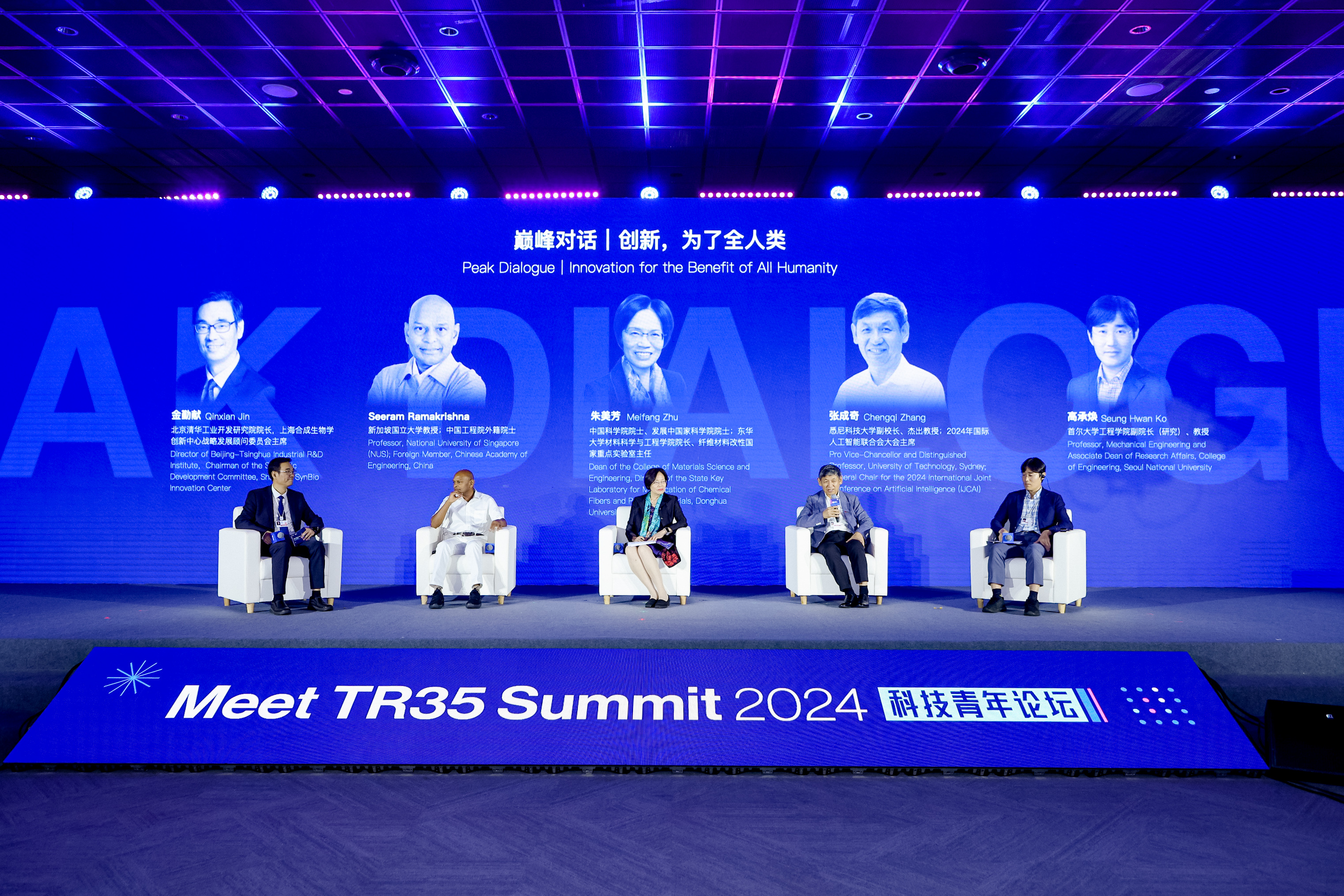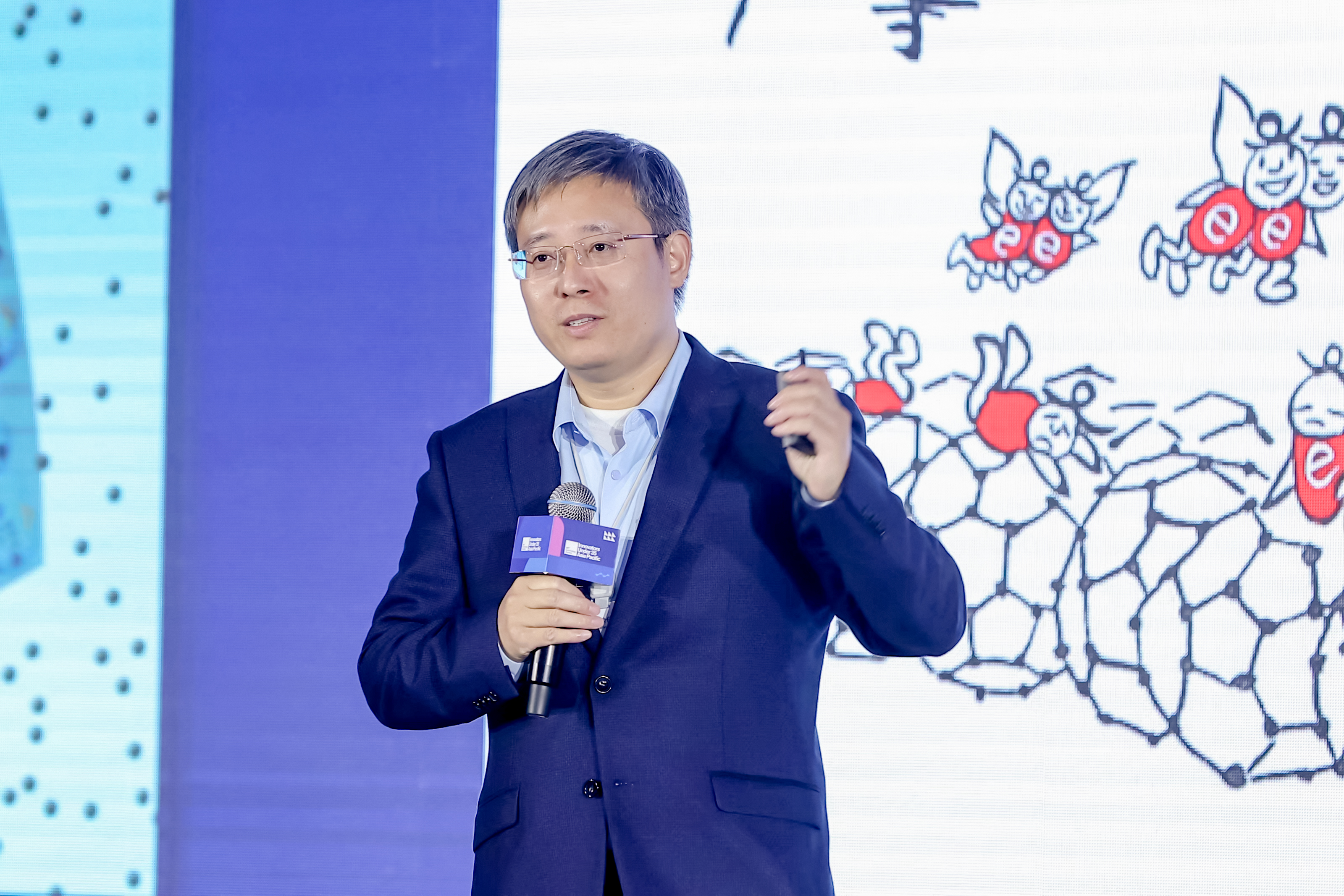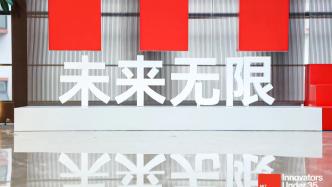
"Discover, Inspire, Lead."
On the morning of September 9, the list of the 2024 "35 Innovators Under 35" (TR35) for the Asia-Pacific region, as featured in MIT Technology Review, was announced at the Zhangjiang Science Hall in Shanghai. A corresponding forum for young technology innovators was held on the same day.
This event is part of the 2024 Pujiang Innovation Forum.
Several Chinese scientists, including Qian Qi, an assistant professor at the Chinese University of Hong Kong (Shenzhen), Zhai Jinglei, an associate researcher at the Chinese Academy of Sciences Institute of Zoology, and Zhao Qi, an assistant professor at the University of Hong Kong, were selected.

2024 "35 Innovators Under 35" (TR35) Asia-Pacific region honorees from MIT Technology Review.
Paradox? The pressure to publish results quickly conflicts with the long-term exploration required for innovation.
The 35 new TR35 honorees from the Asia-Pacific region fall into five categories: "Inventors," "Pioneers," "Entrepreneurs," "Humanitarians," and "Visionaries." They are recognized as rising stars in the technology field, both in the Asia-Pacific region and globally. Many of them are poised to become key players in technology development over the next ten to twenty years.
From 2014 to 2023, a statistical analysis of the research fields of the TR35 Asia-Pacific honorees shows that the top three fields represented are: nanotechnology and materials science, biotechnology and medicine, and energy and sustainable development.
Among these, nanotechnology and materials science account for 27.6%. Interdisciplinary collaboration has accelerated material innovation in the Asia-Pacific region, leading to technological integration and applications in areas such as quantum information, biomedical fields, and energy environment.
Biotechnology and medicine make up 26.5%. Facing population pressures, these innovators pursue quality of life through their innovations.
Energy and sustainable development represent 15.1%. They address challenges in the Asia-Pacific region and explore alternatives and optimizations for energy.
On September 9, forum guest Wong Jing-ke, director of the Plant and Human Interface Research Institute at Northeastern University in the U.S., expressed to Pengpai Technology that one of the biggest challenges young scientists face in the innovation path is how to balance academic pressure with long-term innovation needs. Often, they are compelled to publish results quickly to secure research funding and career advancement opportunities, but true innovation typically demands prolonged exploration and accumulation. Furthermore, with the rapid development of science and technology, they also need to maintain forward-thinking and creativity amid technical iterations and multidisciplinary integrations.
Wong recommended, "First, maintain curiosity about science and have the courage to explore the unknown. Interdisciplinary collaboration is crucial, as examining problems from different perspectives often sparks innovative ideas. Additionally, young scientists must develop communication skills to effectively convey their research results to the outside world, attracting more people to join their vision, collaborate with them, and provide funding support."
Wong emphasized that the ability to clearly communicate scientific concepts is a key factor in ensuring the sustainable development of scientists on their innovation journeys.
He noted that great innovators like Thomas Edison, Steve Jobs, and Elon Musk not only possessed deep technical backgrounds but also excelled in attracting collaborators and resources through exceptional communication skills. In summary, innovation requires not only scientific ability but also extensive collaboration and continuous resource support. In this process, young scientists should focus not only on research but also actively share their vision with the outside world to attract more collaborative opportunities and resources, ensuring the sustainable development of their innovative endeavors.

Could room-temperature superconducting materials quickly change the current state of energy utilization?
Renowned guest, Luo Huiqian, a researcher at the Chinese Academy of Sciences Institute of Physics, presented the topic "The Dream and Reality of Room-Temperature Superconductivity" at the forum.
He stated that since the discovery of the first superconductor in 1911, scientists have been continually exploring, and have now identified over ten thousand types of superconducting materials, constantly raising the critical temperature of superconductors, with the ultimate goal of achieving the dream of a "room-temperature superconductor" with a critical temperature of 300K, or above 27°C. Throughout more than a century of superconducting research, new superconductors, including claims of "room-temperature superconductors," have often been reported—some even meeting both criteria of zero resistance and diamagnetism and published in academic journals—but none have ever been confirmed, meaning their results could not be independently replicated by other research teams. It can be confidently stated that there are currently no viable "room-temperature superconductors!"

Luo Huiqian, researcher at the Institute of Physics, Chinese Academy of Sciences.
If we were to find a usable room-temperature superconductor, would it quickly change the state of energy utilization?
Luo Huiqian advised the audience to remain calm. Taking the example of the copper oxide high-temperature superconducting materials discovered in 1986, they have presented numerous challenges that are difficult to overcome, and scientists have struggled for nearly 40 years to make them barely usable! Even if room-temperature superconducting materials are discovered and validated for use, scaling them for practical applications will still take a long time.
During a roundtable discussion, senior research fellow at the University of Hong Kong, Huang Yuan, director of the Hong Kong Longevity Medicine Centre, Quantum Life founder and CEO, engaged in dialogue with Hyeon Jeong Lee, a researcher from Zhejiang University’s "Thousand Talents Plan," Agata Blasiak, former head of digital medical innovation at the NUS National University of Singapore's N.1 Health Institute, and Dominika Wilczok, a researcher at both Duke University and Duke Kunshan University, as well as a reporter for BioPharmaTrend and director of the Longevity Education Center, on the topic of "Breaking Boundaries to Promote Sustainable Development in the Asia-Pacific Region."
In addition, representatives of the Chinese youth scientific community—Tsinghua University Shenzhen International Graduate School assistant professor Dong Kaichen, Tsinghua University associate researcher Tang Cheng, Ding Ye, founder and CEO of Yuan-Technology, and Wang Leyun, a professor and researcher at Xiamen University School of Medicine—also participated in the roundtable discussion, exchanging views on core topics such as current opportunities for technological innovation in China and talent development.
Appendix: List of 2024 "35 Innovators Under 35" (TR35) Asia-Pacific Region Honorees (The following is not in order of ranking):
1 Ady Suwardi Assistant Professor, Chinese University of Hong Kong
2 Jiang Xinying Postdoctoral Research Fellow, Nanyang Technological University, Singapore
3 Chen Yupei Associate Chief Physician/Researcher, Sun Yat-sen University Cancer Center
4 Zhao Qi Assistant Professor, University of Hong Kong
5 Jiang Kaiyi PhD Student, Department of Biological Engineering, Massachusetts Institute of Technology
6 Jiang Zhiheng Associate Professor, Seoul National University, South Korea
7 Akanksha Thawani Postdoctoral Fellow, University of California, Berkeley, USA
8 Niu Simiao Assistant Professor, Department of Biological Engineering, Rutgers University, USA
9 Jiang Qi Researcher/Professor, Institute of Semiconductor Research, Chinese Academy of Sciences
10 Li Pengju PhD Candidate, University of Chicago, USA
11 Zhai Jinglei Associate Researcher, Institute of Zoology, Chinese Academy of Sciences
12 Wu Jiajun Assistant Professor, Department of Computer Science, Stanford University, and Adjunct Assistant Professor, Department of Psychology
13 Prashant Kumar Assistant Professor, Nanyang Technological University, Singapore
14 Ning Ziyang Chief Technology Officer, CATL Solid-State Battery
15 Tang Yizheng Scientist, Isomorphic Labs, UK
16 Xia Bo Young Scholar, Harvard Society; Independent Scholar and Lab Head, MIT-Harvard Broad Institute
17 Karan Ahuja Assistant Professor, Northwestern University, USA
18 Zhu Di Assistant Professor, National University of Singapore
19 Qiu Chengguang Assistant Professor, Peking University
20 Song Jiaming Chief Scientist, Luma AI, USA
21 Alex Aliper Co-founder and President, Insilico Medicine, USA
22 Ludwik Kranz Head of Quantum Systems Engineering, Silicon Quantum Computing, Australia
23 Liao Wanru Chief Scientist, Agency for Science, Technology and Research, Singapore; Assistant Professor, Nanyang Technological University, Singapore
24 Neil Robinson Researcher, University of Western Australia
25 Anurag Kumar Scientist, Meta Research, USA
26 Shang Luoran Researcher, Fudan University
27 Zhu Yibin Assistant Researcher, Tsinghua University
28 Zhang Haitian Professor, Beihang University
29 Han Gengyuan Assistant Professor, Seoul National University, South Korea
30 Dmitrii Ustiugov Assistant Professor, Nanyang Technological University, Singapore
31 Park Jimin Assistant Professor, Korea Advanced Institute of Science and Technology
32 Chen Yongzi Assistant Professor, National University of Singapore
33 Zhao Anna Lecturer/Assistant Professor, University of Sydney, Australia
34 Qian Qi Assistant Professor, Chinese University of Hong Kong (Shenzhen)
35 Nako Nakatsuka Assistant Professor, École Polytechnique Fédérale de Lausanne, Switzerland

